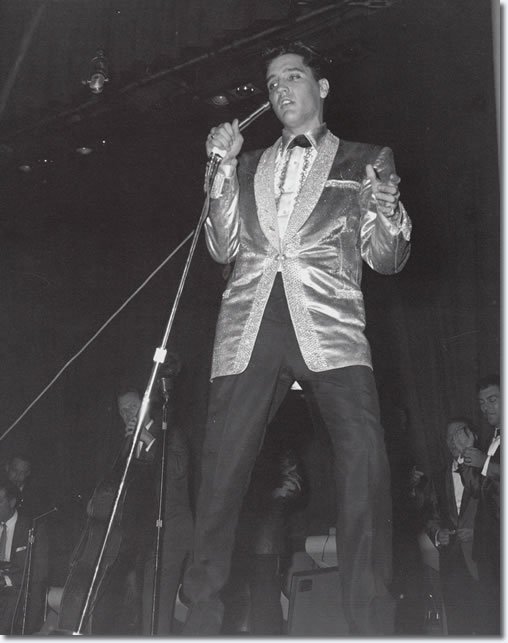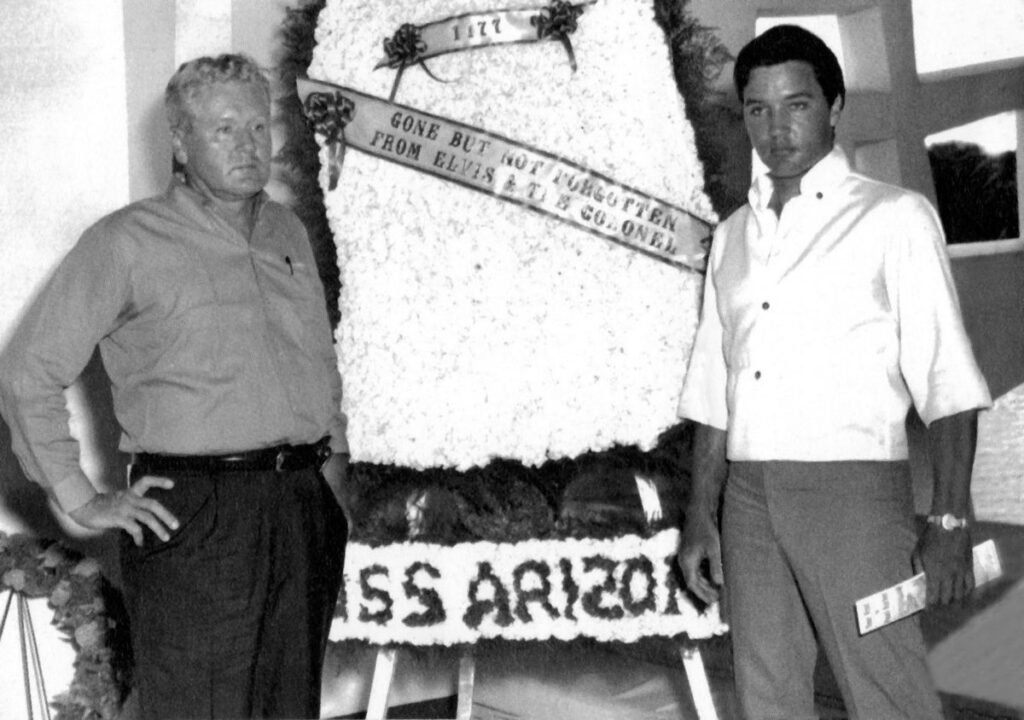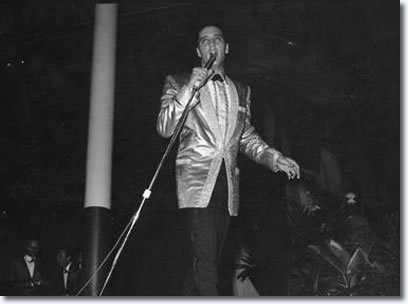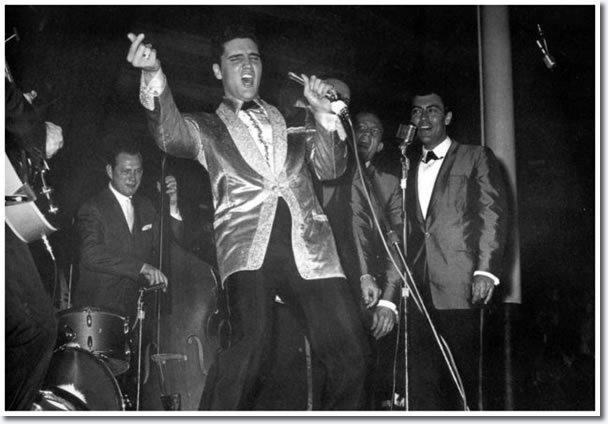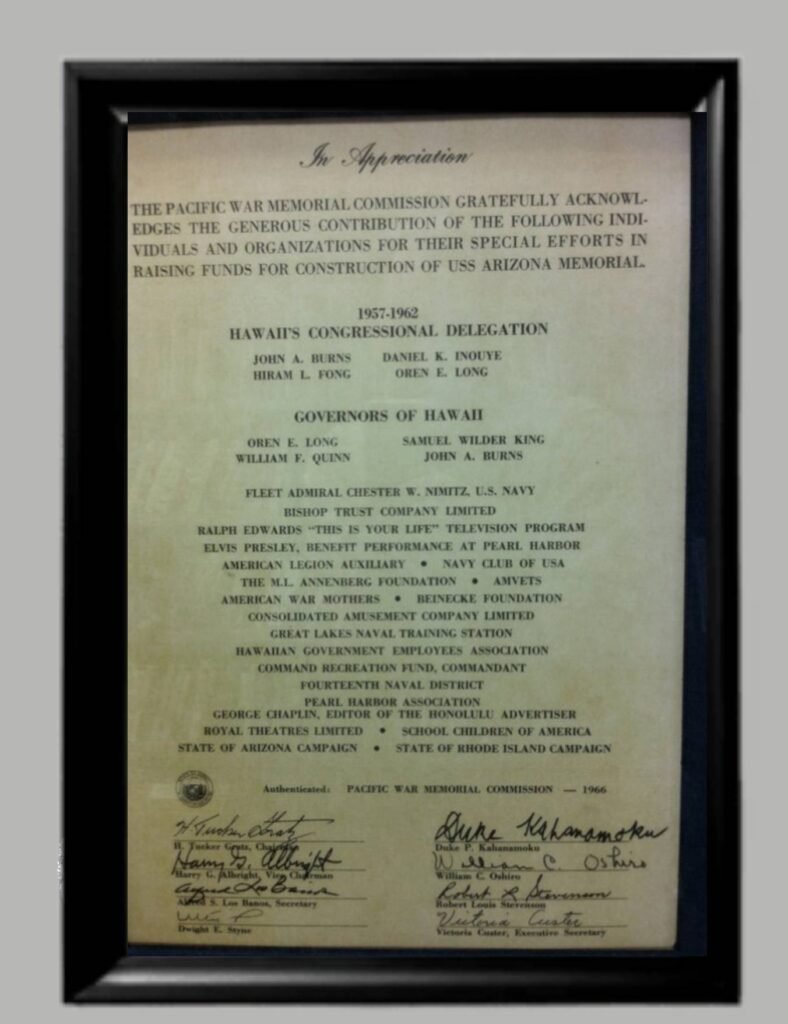Elvis Presley and the U.S.S. Arizona Memorial
Family Members Push to Bring the Legacy of Elvis Presley Back to the U.S.S. Arizona Memorial Museum
When Americans first set out to build a proper memorial above the sunken hull of the U.S.S. Arizona, the effort sputtered. By 1960, less than half of the roughly $500,000 needed had been raised, and the project was slipping from view. Then Elvis Presley—newly discharged from the U.S. Army and on his way to film Blue Hawaii—stepped in. With one carefully staged benefit at Pearl Harbor’s Bloch Arena on March 25, 1961, he reignited public interest, raised tens of thousands of dollars, and helped push Congress to finish the job. The memorial opened the following year.
Operation 85’s Executive Director Kevin Kline, speaking on behalf of over 1,300 family members, has opened conversations with Jack Soden, CEO of Elvis Presley Enterprises, and the National Park Service Superintendent at Pearl Harbor about what an appropriate, accurate, and dignified presentation could look like and what are the chances it could ever be achieved. The National Park Service (NPS)—which administers the memorial and museum—would, of course, need to approve any new permanent exhibit. The spirit of this effort is not celebrity worship; it is historical completeness. The families want visitors to understand that the memorial we revere today exists because ordinary citizens, public servants, and one globally known entertainer pulled together at a moment when the project was stalling. A very similar approach to how Operation 85 stepped in to bring the Unknowns from the U.S.S. Arizona back to the forefront.
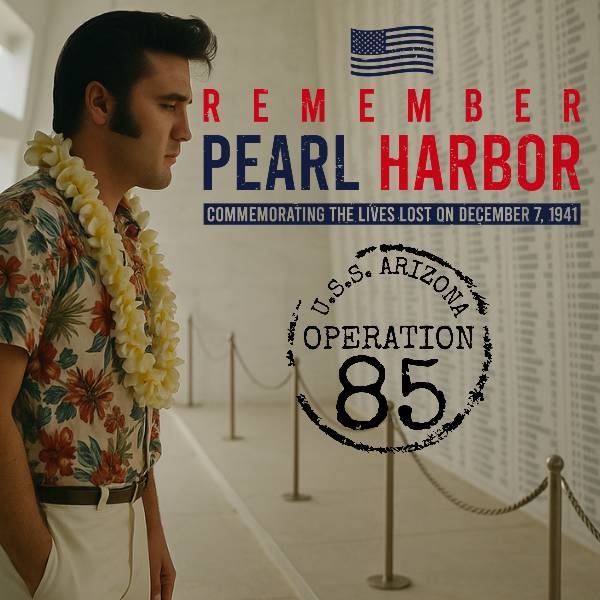
“Let’s Tell the Whole Story”: Families of the U.S.S. Arizona Call for a Permanent Elvis Presley and Civilian Exhibit at the Memorial Museum
When a promise faltered—and a nation rallied
By 1960, the drive to create a proper memorial at the Arizona had stalled. Though enabling legislation set a budget near $500,000, less than half had been raised, and enthusiasm was fading. That changed in early 1961, when Colonel Tom Parker, Elvis Presley’s manager, learned of the shortfall and proposed a simple idea: while Elvis was in Hawaiʻi to film Blue Hawaii, hold a one-night benefit concert at Pearl Harbor. Elvis, a recently discharged U.S. Army veteran, immediately agreed.
Bloch Arena on the Navy base became the venue, and Parker handled the details with a fundraiser’s ruthlessness: tickets would range from $3 to $100, and no complimentary tickets would be issued—not even to admirals or VIPs. Reports from the time underscore Parker’s insistence that everyone pay, a point that generated headlines and maximized proceeds. On March 25, 1961, a crowd of about 4,000 packed the hall to see Elvis in his gold lamé jacket deliver a rare live set—one of only a handful of concerts he performed between his Army service and the 1968 “Comeback Special.”
What the benefit achieved
Because different tallies were kept (and additional checks rolled in after the show), published figures vary slightly. Contemporary and retrospective accounts agree on the broad picture:
Ticket sales and immediate donations exceeded $50,000 that night, with many reputable summaries noting totals just over $54,000.
Elvis (and/or his management) added a personal donation, often cited as $5,000; some later breakdowns credit the concert with about $64,000 to the fund once all gifts tied to the event were counted.
What matters most is the effect: the Presley benefit re-ignited public interest and gave Congress a concrete reason to act. Later in 1961, Senator Daniel K. Inouye secured $150,000 in federal funds, closing the gap.
The Arizona Memorial was dedicated on May 30, 1962—a national promise kept at last.
Of course, Elvis was not alone. Before and after the concert, key contributions flowed from many sources: $50,000 from the Territory of Hawaiʻi; $95,000 raised after a 1958 This Is Your Life episode featuring Medal of Honor recipient Rear Adm. Samuel Fuqua; and $40,000 from a Revell model partnership with the Fleet Reserve Association. The point is clear: the memorial came into being through a coalition of giving—grassroots donors, television audiences, model-building kids, territorial leaders, and the U.S. Congress—lit by a spark only someone of Elvis’s visibility could provide at that moment
Why families want this story told inside the museum—permanently
Ask the Arizona families why they care about including Elvis’s role and you’ll hear a consistent theme: accuracy and gratitude. Visitors should grasp that remembrance in America has always been a joint enterprise—public and private, solemn and practical. If a single night at Bloch Arena helped transform a faltering campaign into a completed national memorial, that is not trivia; it is civic history worth preserving alongside ship schematics and action timelines.
Operation 85 families also see an echo between then and now. In 1961, a broad community stepped forward to finish the memorial. Today, Operation 85’s network is stepping forward to finish another chapter—gathering DNA Family Reference Samples, re-establishing lines to living relatives, and advocating for the identification of the Arizona’s unknowns. The families believe an Elvis-and-the-memorial exhibit would remind every visitor that citizen action can change outcomes—that remembrance is something we do, not just something we visit.
.
What a respectful exhibit could include
Operation 85’s Executive Director Kevin Kline, grandnephew of a US Navy sailor killed and still considered missing from the U.S.S. Arizona, is expected to make a case to the National Park Service along with Elvis Presley Enterprises on how all could work together to best present this history. The families’ suggestion is to keep it clear, factual, and modest—a small, permanent installation with:
Timeline panels showing the fundraising shortfall and the rapid planning of the March 25, 1961 benefit at Bloch Arena. Ticket prices, the no-freebies policy, and the concert program could be reproduced directly from contemporary sources.
A funding ledger graphic summarizing the principal contributions: Territory of Hawaiʻi ($50,000), This Is Your Life and related private gifts ($95,000), Elvis’s concert proceeds (shown with the range used in scholarship), Revell/Fleet Reserve ($40,000), and the 1961 federal appropriation ($150,000).
Photographs and/or any artifacts from the concert and from the memorial’s 1962 dedication, paired with a short label explaining how the renewed publicity helped Congress justify the final funding.
A quiet, reflective note linking the 1961–62 effort to today’s family-led work by Operation 85—how remembrance is sustained across generations.
This display would not eclipse the memorial’s core purpose; it would support it—a compact, evidence-based acknowledgement of how the memorial came to be, crafted with guidance from NPS curators, Elvis Presley Enterprises, and the families themselves.
Addressing Common Questions
Wasn't Elvis's role already recognized?
It certainly appears in books, articles, and online histories—including the U.S. Naval Institute’s account that outlines Parker’s strategy and pricing, and in NPS-linked summaries and timelines. But inside the museum itself, there is no enduring, dedicated exhibit that presents the full fundraising story with the weight it deserves. Families are simply asking that what historians already affirm be shared consistently with visitors.
Did Elvis pay for the memorial?
No—and the families are careful not to claim that. The memorial was paid for by many hands. Elvis’s singular contribution was to re-energize the drive at a crucial moment, provide a large infusion of funds, and give Congress a reason to finish the job with public money. That’s an honest, compelling story—and it belongs in the museum.
Why push for this now?
Because memory fades if we don’t tend to it. A permanent panel ensures that future generations of visitors understand how private initiative and public leadership met in 1961–62 to keep a promise to the fallen. – and again in 2023-2026 by the efforts of the families of Operation 85 to identify and give closure on the crew members never identified and left buried as Unknown 10 miles away from Pearl Harbor.
I heard there was a plaque already on the Memorial and it was removed by NPS!
Through a little detective work, we believe we have solved the mystery. Pictured is this famous plaque that hung in the Flag Room Entrance area of the U.S.S. Arizona Memorial. As you can see, the paper document, not a plaque, was put behind normal glass and a black frame, and gives credit to all those involved in the fund raising efforts of the memorial, including Elvis.
The Mandela Effect: This document did hang for many years on the wall inside the Memorial and was seen by millions of visitors. Many of these visitors have had different recollections of what this document was and what it said. Some swore it was all about Elvis while other’s couldn’t really remember.
It was removed by the National Park Service! But not because they wanted to discredit anyone, or remove history. The original document and frame had just become seriously weathered due to the salty air. The frame was removed by the Park Service and believed to have been put into storage. Visitors called the National Park Service demanding the tribute to Elvis be returned, but it was never a tribute to Elvis, just a small document from the Pacific War Memorial Commission.
A Living Legacy
The U.S.S. Arizona Memorial is among the most visited memorials in the nation, a place where oil still seeps to the surface and names are still spoken aloud. It exists because citizens and institutions worked together—because a community in 1961 refused to let a promise lapse. That is the story the families want every visitor to hear.
As Operation 85 continues its mission to restore individual names to the unknowns, the families believe that telling the full story of the memorial’s creation—including Elvis Presley’s catalytic role—will deepen visitors’ understanding of what remembrance requires. It took heart, leadership, and generosity then. It takes the same today.
Sources and further reading
U.S. Naval Institute, “How Elvis Helped Save the USS Arizona Memorial” — ticket pricing and “no freebies,” benefit context. USNI News
Biography (A&E), “Elvis Presley Gave a Rare Concert to Help Save the USS Arizona Memorial” — stalled fundraising, impact of the concert, dedication date. Biography
Wikipedia summary (with citations to NPS and other primary sources), funding breakdown including Territory of Hawaiʻi, This Is Your Life, Elvis benefit, Revell partnership, and 1961 federal appropriation. Wikipedia
Pearl Harbor historical blogs on Inouye’s $150,000 appropriation and the broader mix of private/public support. Pearl Harbor – Pearl Harbor
Additional concert specifics (seating, price scale, attendance). Elvis Presley MusicThe Elvis Files
- Elvis Photos of Concert: Elvis Presley Enterprises
Note: Dollar amounts in historical reporting sometimes vary by source due to whether totals include post-concert gifts and how proceeds were allocated. The figures above reflect widely cited ranges across reputable sources.
WATCH THE DOCUMENTARY
LISTEN TO THE ENTIRE SHOW
HELP! Do you have any original photos, souvenirs or artifacts from the Bloch Arena Concert or related to Elvis and the USS Arizona Memorial?
Do you have any original items, artifacts or photos related to the historic Elvis Presley Bloch Arena concert on March 25, 1961? We’re looking to document items and artifacts to tell the family stories of Elvis Presley and the U.S.S. Arizona Memorial.
Please send us an email to elvis@ussarizona.navy to let us now what you have. We would love to have a photo or scan of what you have along with your family’s story or connection to the item.
Passing the Torch to the Next Generation of U.S.S. Arizona Family Members
As we get further and further away from the 1941 attack on Pearl Harbor, there is a chance that information and knowledge of family history from the U.S.S. Arizona and the attack on Pearl Harbor may get lost with each dying generation. It’s important to pass on your family history and instill the importance of those that served, and those that gave the ultimate sacrifice. The U.S.S. Arizona’s “Operation 85” Founder and Executive Director Kevin Kline, takes time at the U.S.S. Arizona Memorial to pass a torch to his two young daughters, honoring their fallen uncle GM2c Robert Kline at a flag raising ceremony on the Arizona Memorial in August 2022.

